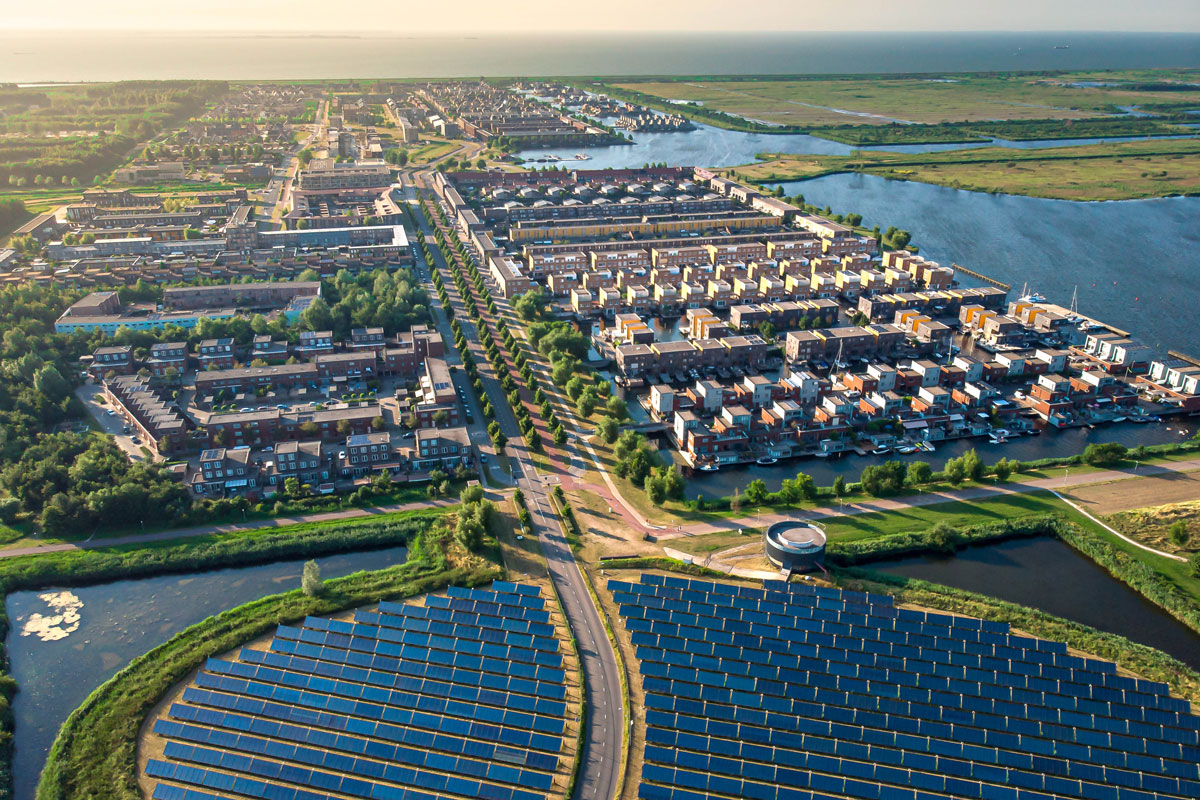Charlie Drysdale, associate director, smart energy and sustainability at Hydrock, discusses the opportunity for district heating networks to solve the heat decarbonisation challenge and accelerate Scotland’s path to net zero.
 This article contains paid for content produced in collaboration with Hydrock Ltd.
This article contains paid for content produced in collaboration with Hydrock Ltd.
Recent clarity around hydrogen policy in the UK, additional support announced for heat pumps, and regulatory advances in heat zoning are all cause for celebration.
Heat decarbonisation is the primary challenge we all need to address if we’re to have any chance of meeting government targets to tackle the climate emergency. And the truth is, we’re not on track.
The heating sector in the UK accounts for one-third of annual carbon emissions. To be on a net-zero journey and targeting carbon emission reductions without putting heat at the forefront of the agenda would fail to address the real issue. It’s nothing more than tinkering around the edges.
In 2021, Scotland’s share of energy consumption from the heat sector was 53% compared to 22% from transport and 22% from electricity.
Scotland has the lowest share of heat supplied by renewable sources in Europe. For a nation that’s aiming to lead the green revolution, this is unacceptable. Heat decarbonisation is still the elephant in the room, clinging onto an old woolly coat.
Scottish Government’s consultation on EPC reform is a significant lever in this challenge. EPCs are one of the only windows into the day-to-day lives of homeowners and small business owners, existing to help those people make the right decisions about the energy performance of their buildings. However, they’re widely acknowledged as unfit for purpose.
Ending this month, this consultation needs to result in sweeping reforms to encourage the uptake of tried and tested decarbonisation options for buildings and businesses.
Addressing building fabric and energy efficiency is important, but it mustn’t come at the expense of the best heating solution. It’s time to move on from ‘fabric first’ and adopt the mantra of ‘fabric-with’ by exploring centralised solutions for distributing heat.

Scotland has set statutory targets for thermal energy (heat and cooling) supplied by heat networks, including a target of 6TWh of output (equivalent to 8% of Scotland’s current non-electrical heat consumption) by 2030. This is a positive move as heat networks can provide a low-carbon and affordable heating solution for many homes and businesses.
By 2030, the overall European market share of heat networks is expected to increase from 13% to 30% and could even meet almost half of Europe’s heat demand by 2050. And we can learn a lot from our European neighbours in Denmark and Sweden, who are leading the way in developing and deploying fourth- and fifth-generation district energy networks.
Based on lower temperature water distribution, fourth generation district heating is the journey towards lower temperature systems (50‒60°C), high energy efficiency and more renewables. On the other hand, fifth generation is used for ultra-low systems and distributed heat transfer instead of combustion, where heat pumps in the home are used to extract or reject heat via a communal circuit, making energy efficiency and building fabric more critical to success.
On the decarbonisation battlefield alongside EPC reform and the positive regulatory advances, is there a case for the UK to define 4.5 generation district energy networks as our optimal path (when it comes to security, reliability, flexibility, and resilience) for tackling the heat issue? And, in doing so, ensuring that it’s the dominant heating solution of the future?
Looking at the challenge through a smart energy and sustainability lens, the importance of embracing the right mix of low carbon technologies whilst achieving energy demand reduction as part of our approach to the energy transition can’t be stressed enough.
If we get district heating right, we’ll overcome the challenge of heat decarbonisation and consign it as a relic of the past, creating a cleaner, greener and more affordable future.
Hydrock is a British-owned, engineering design, energy and sustainability consultancy. Visit the website for more information.










